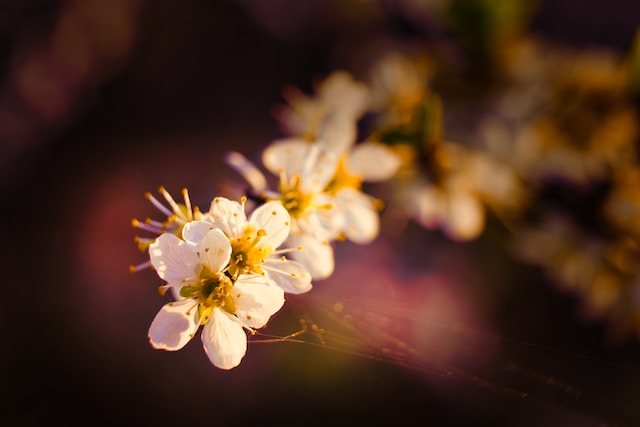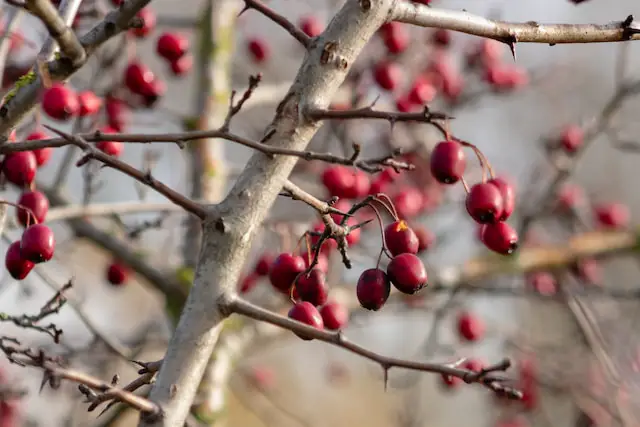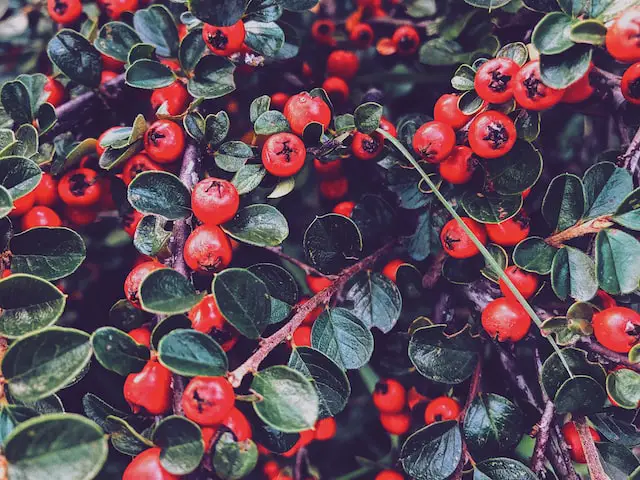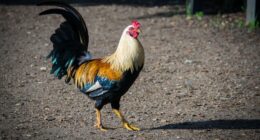Blackthorn is a much taller plant with dark purple berries, while hawthorn is shorter with red berries. Blackthorn is a large, spiny shrub while the hawthorn is a small tree. Blackthorn has dark-coloured bark and leaves, while hawthorns are light-coloured.
What is blackthorn?
(Photo by Joran Quinten on Unsplash )

Blackthorn (Prunus spinosa) is a shrub or small tree native to Europe, western Asia, and parts of northern Africa. It is also known as sloe, and it is a member of the rose family. The plant has sharp thorns, hence the name “blackthorn,” and it produces small, dark purple fruits called sloes.
In traditional medicine, blackthorn has been used for its astringent and diuretic properties, as well as for treating digestive issues, coughs, and colds. The fruits are used to make sloe gin and other liqueurs, and they can also be used to make jams, jellies, and syrups.
Blackthorn is also valued for its ornamental qualities, with its profusion of white flowers in early spring and its distinctive bark, which is dark and fissured. It is often planted as a hedge or as a windbreak, and it is a popular choice for bonsai enthusiasts.
In some cultures, blackthorn has also been associated with mythology and folklore. In Ireland, for example, it is said that the fairy folk live in blackthorn thickets, and that cutting down a blackthorn tree can bring bad luck. In England, blackthorn has been used to make walking sticks, and it is said that a blackthorn walking stick has protective powers against evil spirits.
What is hawthorn?
(Photo by László Glatz on Unsplash )

Hawthorn (Crataegus spp.) is a small tree or shrub that is native to temperate regions of Europe, Asia, and North America. It is part of the rose family and is closely related to apples and pears. Hawthorn has thorny branches, and it produces clusters of small white or pink flowers in the spring, followed by bright red berries, called haws, in the fall.
In traditional medicine, hawthorn has been used to treat a variety of ailments, including heart disease, high blood pressure, digestive issues, and anxiety. Modern research has shown that hawthorn may have beneficial effects on the cardiovascular system, such as improving blood flow, reducing blood pressure, and lowering cholesterol levels.
Hawthorn is also used as a herbal supplement and is available in various forms, including capsules, tablets, and tinctures. It is important to consult with a healthcare provider before using hawthorn as a supplement, as it may interact with certain medications.
Hawthorn has a long history of use in folklore and mythology, and it has been associated with love, fertility, and protection. In some cultures, hawthorn is considered to be a sacred tree, and it is said that it can protect against evil spirits and negative energy. In the Celtic tradition, hawthorn is associated with the festival of Beltane, which celebrates the beginning of summer.
Blackthorn Vs. Hawthorn – Key differences
Blackthorn and hawthorn are two different species of shrubs or small trees, and they have some key differences. Here are some of the main differences between blackthorn and hawthorn:
Appearance: Blackthorn has dark, fissured bark, and thorny branches that are often covered with long, sharp spines. Its leaves are oval-shaped, with a serrated edge, and it produces small, dark purple fruits known as sloes. Hawthorn, on the other hand, has smooth, gray bark, and its branches are often covered in thorns or small spikes. Its leaves are lobed and toothed, and it produces small, red berries known as haws.
Uses: Blackthorn is primarily used for its culinary and medicinal properties. Its fruit, the sloe, is used to make jams, jellies, and liqueurs, and its bark, leaves, and fruit have been used in traditional medicine to treat various ailments. Hawthorn is also used for medicinal purposes, particularly for its beneficial effects on the cardiovascular system. It is also used as an ornamental plant, and its berries and leaves are sometimes used in cooking.
Distribution: Blackthorn is native to Europe and western Asia, while hawthorn is native to temperate regions of Europe, Asia, and North America.
Cultural significance: Both blackthorn and hawthorn have played important roles in folklore and mythology. In many cultures, blackthorn has been associated with magic and protection, while hawthorn has been associated with love and fertility. In some traditions, hawthorn is considered to be a sacred tree, while cutting down a blackthorn tree is said to bring bad luck.
While blackthorn and hawthorn share some similarities in terms of their uses and cultural significance, they have distinct differences in their appearance, distribution, and uses.
What is blackthorn used for?
Blackthorn, also known as Prunus spinosa, is a shrub or small tree that has been used for a variety of purposes throughout history. Here are some of the most common uses of blackthorn:
Culinary uses: The dark purple fruits of the blackthorn, known as sloes, are used to make jams, jellies, and liqueurs such as sloe gin. Sloes can also be used as a flavoring for vinegar, and they can be added to meat dishes or stews to give them a tangy flavor.
Traditional medicine: Blackthorn has a long history of use in traditional medicine. The bark, leaves, and fruit have been used to treat a variety of ailments, including diarrhea, coughs, and sore throats. The astringent properties of blackthorn have been used to reduce inflammation and bleeding, and the fruit has been used as a mild laxative.
Crafts and woodworking: The thorny branches of the blackthorn have been used to make walking sticks, and the wood is hard and durable, making it suitable for use in woodworking projects.
Ornamental uses: Blackthorn is valued for its ornamental qualities, with its profusion of white flowers in early spring and its distinctive bark, which is dark and fissured. It is often planted as a hedge or as a windbreak, and it is a popular choice for bonsai enthusiasts.
Folklore and mythology: In many cultures, blackthorn has been associated with mythology and folklore. In Ireland, for example, it is said that the fairy folk live in blackthorn thickets, and that cutting down a blackthorn tree can bring bad luck. In England, blackthorn has been used to make walking sticks, and it is said that a blackthorn walking stick has protective powers against evil spirits.
Blackthorn has a long history of use in a variety of contexts, from medicine to crafts to folklore, and it continues to be valued for its many uses today.
Photo by Kyrylo Kazachek on Unsplash








